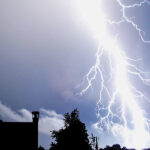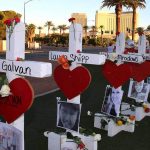 Training for Event Leaders
Training for Event Leaders
A new four-day training program is set to launch Dec. 2-5, 2014 in Lititz, PA, ESA’s home base. “And more training is coming,” promises Jim Digby, longtime touring pro and ESA president.
For this training program, ESA has enlisted the help of industry experts including Kent Jorgensen (chairman of IATSE’s Life Safety Committee) and David Glowacki (OSHA 10 trainer). They are creating the live event industry’s first general hazard awareness program in North America for anyone who might work on an event site. Portions of the training program have already been offered to the touring teams for Walking With Dinosaurs and Linkin Park.
The second session is aimed at production and tour managers, stage managers, show producers and “anyone with decision-making responsibilities on the ground,” Digby says. It is something that is sorely needed, as all too often, these leaders are put in charge of a show, and for all their other skills and talents, usually have little or no emergency planning awareness. “Many are unaware that by taking on the leadership role, they also inherit the legal ‘duty of care’ for those they are responsible for. So one of the benefits of ESA training is a greater hazard responsibility awareness and the mitigation of the legal risks.”
 By the Book
By the Book
In February 2014, The Event Safety Guide was published and available through the ESA website (eventsafetyalliance.org). The book was created by the ESA and edited by Donald C. Cooper. As Digby writes in the forward, “To realize The Event Safety Guide’s full potential, we must now take it to the field. As you apply these best practices to daily operations, we hope you will continue to give us the benefit of your experience… we intend this to be a ‘living’ document.”
There are many concerns: Currently, anyone can show up on a site and say claim to have the experience necessary to do a job; there are no verification methods. Other than the ETCP certification program (which the ESA enthusiastically endorses), there’s actually nothing stopping an individual going on a site and saying, “I can do that.” One of the goals of the ESA through the book and their training sessions is to create a system of checks and balances that will someday aid in verifying a professional’s credentials.
It’s as important to know what the book is and what it isn’t.
“This absolutely is not a ‘how to’ guide,” Digby states emphatically. “When you have two riggers in a room, they are going to have differing opinions, and both can be right. What this book will help you understand is how to ask the right questions and inform your obligations to existing regulations.” He adds that the book is intended for everyone, from the weekend warrior working that church affair to the professional in charge of that 100,000-person concert in Central Park. And when local officials ask for the “why” of something, there is now a “reference bible” of best practices from the experts in the industry to add credibility and thus parlay concerns into confidence.
Providing guidance is the goal of the guide. “If you’re doing pyro or fireworks, it will point to the places you need to go to understand what codes should to be adhered to. It also explains the different classifications of fireworks, and if you are going to produce an event with little or no knowledge of fireworks, it explains the guidelines to check for.”
A glance at the Table of Contents certainly shows breadth: Planning and Management; Emergency Planning; Fire Safety; Medical, Ambulance and First Aid Management; Weather Preparedness; Crowd Management; Facilities for People with Special Needs; Rigging; Structures; Pyro; Special Effects; Merchandising and Special Licensing; and more, for anything from small events to arena shows.
Digby emphasizes that this book will make the questions clearer and will also provide some direction where to go to get answers, but couldn’t possibly provide all the answers a live event producer needs. For example, the state and local regulations setting up an event in Boston is
going to be pretty different than setting one up in Salt Lake City.”
The Road to “Best Practices”
“It’s important that we in the live event industry police ourselves using our own internal mechanisms and promote safety measures based on the collective experience of the industry,” Digby continues. “We can’t wait for, nor do I think we want, the Federal government to codify our practices; the outcome would likely be agonizing. We build things differently every day to keep the audience’s interest, and we will increase the measures we utilize to do it safely.”
The need is daunting. Recently Digby, who works with Linkin Park, said he was able to coordinate all teams involved with the tour to be in the same room to discuss emergency preparedness and safety. “Typically the band hires X Lighting Company, Y Audio Company, and Z Video Company, and they all show up that day and do their individual jobs trying to work around each other,” he points out. “But at some point they should all be on the same page and know what to do as a team if there’s a problem.”
Moving Forward
And the book is not the end of the line. Far from it. “We’re not letting go of this mission,” he says. “We’re not going to give up on the push for the industry to create the cultural change and embrace shared best practices for safety. This requires a wholesale paradigm shift and ongoing discussions about safety.”
As for their new home, “We’re very excited,” he adds, regarding being part of the Rock Lititz campus. “We have a curriculum development team, and we intend to create substantive programs that will enhance the working knowledge of safe practices.” The ESA — today 3,000 members strong — will remain a non-profit, and is able to do what they do with the support of the many in the industry who have generously donated to the project, in addition to a growing industry sponsorship of the group.
For more ESA info, go to www.eventsafetyalliance.org. To order a printed copy of The Event Safey Guide, go to www.plsn.me/ESAguide

